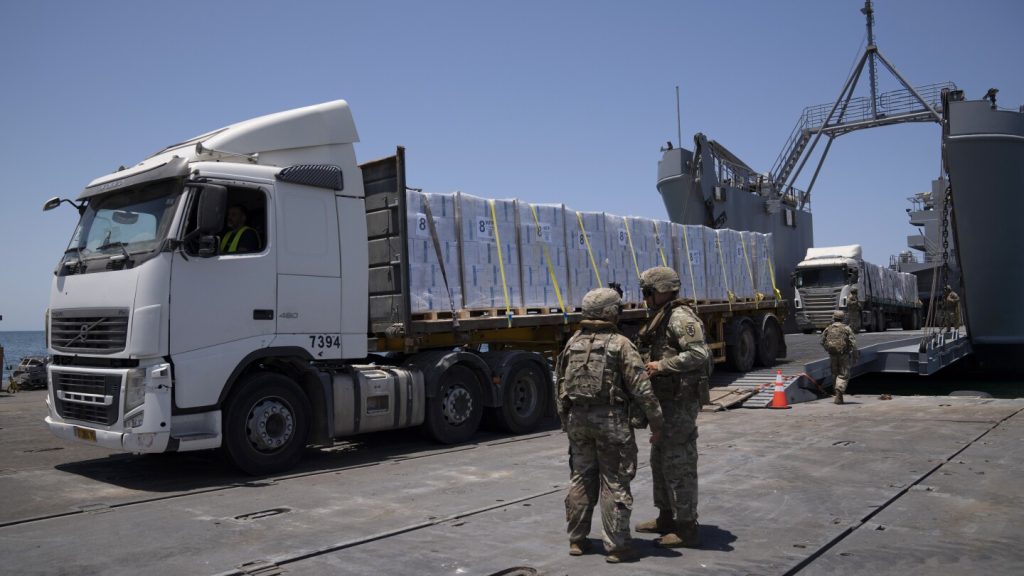President Joe Biden ordered the construction of a temporary pier to deliver humanitarian aid to Gaza, despite concerns raised by some at the U.S. Agency for International Development (USAID) that the effort would be challenging to accomplish and could undermine the push to open efficient land crossings for aid delivery to the territory. The project, known as the Joint Logistics Over-the-Shore system (JLOTS), was intended to hasten aid delivery to Gaza, which was facing severe food shortages due to the conflict between Israel and Hamas. However, the mission faced numerous weather and security challenges, leading aid groups to withdraw from the project by July.
The USAID watchdog report revealed that several staff members had expressed concerns that focusing on using JLOTS would divert attention from advocating for opening land crossings that were seen as more efficient in transporting aid to Gaza. Despite these concerns, once President Biden issued the directive, the agency shifted its focus to using JLOTS effectively. The decision to deploy the temporary pier came as Gaza was experiencing a humanitarian crisis, with the United Nations reporting that nearly all of the territory’s 2.3 million residents were struggling to find food and over half a million were facing starvation.
The Biden administration aimed to use the sea route and pier to provide food for 1.5 million people in Gaza for 90 days, but fell short in delivering enough aid. The pier managed to feed around 450,000 people for a month before shutting down due to repeated damage caused by high waves and bad weather. The U.N. World Food Program pulled out of the project after an Israeli rescue operation adjacent to the pier raised concerns about the neutrality and independence of its workers in the conflict. Despite the challenges, the National Security Council spokesman emphasized that the pier played a crucial role in delivering aid to Gaza during a critical time.
The USAID watchdog report also highlighted the failure of the U.S. to honor commitments made with the World Food Program, particularly in relation to the location of the pier and providing security. The U.S. agreed that the pier would be placed in north Gaza where the need for aid was greatest, and that a U.N. member nation would provide security. However, the Pentagon placed the pier in central Gaza, citing security concerns. Ultimately, Israel’s military provided security for the pier as no neutral country agreed to take on the role. Despite the discrepancies, U.S. agencies worked together to plan the project, consulting with the United Nations and humanitarian groups to mitigate risks to personnel, including humanitarian staff.
The Defense Department defended the project, stating that the pier achieved its goal of providing a means to deliver humanitarian aid to the people of Gaza during the acute humanitarian crisis. They acknowledged the challenges faced in the complex emergency situation but emphasized the positive impact of the pier in delivering food to the needy civilians. The U.S. official noted that concerns about the project potentially undermining overall aid efforts were raised early on, prompting USAID to add staffing to address both the pier and the land routes simultaneously. The agency emphasized that U.S. agencies collaborated in planning the project and consulted with relevant stakeholders to ensure the safety and effectiveness of aid delivery to Gaza.


